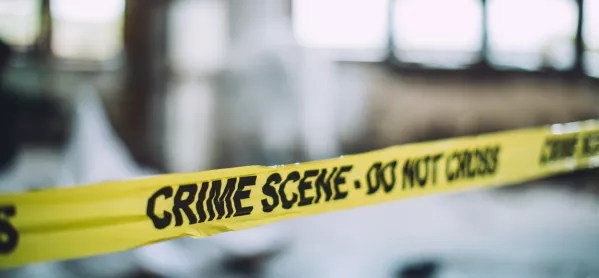- Home
- Leadership
- Strategy
- ‘Terrifying’ intruder incident at school: what we learned
‘Terrifying’ intruder incident at school: what we learned

I’ve never taken a school’s crisis management plan for granted. It is a fundamental document and one that must be backed up with regular training.
All that has occurred this decade at our school - a pandemic, war on our border and even earthquakes - has reinforced this belief.
However, even if you have a plan, your crisis management response can be tested not only by a global event but also by a small-scale, random and rapid incident - as we experienced recently with one of the most potentially extreme scenarios a school can face: an intruder on site.
School crisis response: an intruder in school
The person had got on to the school site under the guise of being a parent with an appointment, and had managed to get as far as reception.
Fortunately, our front-of-house team have clear protocols for visitors in school hours and when the receptionist found his behaviour suspicious, raised the alarm with the security guards.
At this moment, though, he suddenly ran back outside and across the campus.
The receptionist then alerted me and my senior leadership team to what was unfolding and I rushed to the front of school to find out more, with numerous worrying thoughts running through my mind: was he armed? Why was he here? What was his intention?
The receptionist told us that she couldn’t see if he had a weapon but he had a backpack on when he arrived. Although, thankfully, security had grabbed this from him in reception before he ran off. She added that he was shouting about “internationals should go back home and leave Moldova”.
- Safeguarding: Near-miss dog attack was a wake-up call for our school
- Online threats: Three AI safeguarding issues schools should know about
- Safeguarding Around the World: Handling cultural sensitivity
Presented with such a potentially dangerous situation, we made the decision to press the button in our reception that called in another security team on standby for just such eventualities - the first time I have ever had to make that decision. The police were called, too.
All of this was unfolding during lunchtime when students were outside playing, including some in the far end of the campus where the intruder had run to.
The situation was clearly fraught but the value of good planning and a team that knew their roles became clear as I saw our chief finance officer, head of HR and chief operating officer rushing to get pupils inside. They moved other students away from the windows and let staff know what was happening.
Meanwhile, my security team had cornered the increasingly agitated intruder, and they kept him contained until the “heavier” security team arrived to walk him off campus and into a waiting police car. The relief among staff was palpable.
Improving security
From this point, it was about understanding what had happened, what we did in response and what we could have done better.
The first thing we did was bring in the experts to assess our response. After all, dealing with intruders and security protocols is not the preserve of educators.
We are fortunate enough in our international community to work with people who do this for a living, protecting diplomatic missions in an array of countries. They came in to carry out an independent overview of our crisis management plan, protocols and actions, and gave us a raft of useful, practical insights.
For example, while they praised several aspects of our response, such as the quick thinking of our receptionist and on-site security, they also pointed out where we could strengthen our security.
Following this advice, we have improved the protocols for the gate security guard to check all visitor ID and getting the daily visitor list linked to reception, and we are planning to install a two-gate entry system with a body-size turnstile system to strengthen security at our main point of entry and exit.
We have also had an independent check of the perimeter fence and our CCTV campus coverage to ensure there are no weak points.
On the policy side, these experts also gave us advice on strengthening training for staff on how to deal with an intruder on site. Specifically, staff should understand that any communication with an intruder should only be to issue clear requests for them to comply with instructions, and only one person should carry out the communication.
We have shared these changes with staff to reassure them, and we have met with parents to go through what happened and alleviate their concerns, too. It is far better to be honest and open in such situations rather than trying to hide what has occurred.
Looking back, it was terrifying to face the unknown of an intruder in our school, and it underlines why training in this area is so important - it can happen to any school at any time.
Of course, no one wants to go to a school that feels like a prison or to live in a state of constant fear of danger.
But having a plan, being prepared, training staff and reviewing your policies regularly are vital to ensure that a school remains as safe a place as possible for students and staff alike.
Rob Ford is director of Heritage International School in Chisinau, Moldova
Register with Tes and you can read two free articles every month plus you'll have access to our range of award-winning newsletters.
topics in this article



